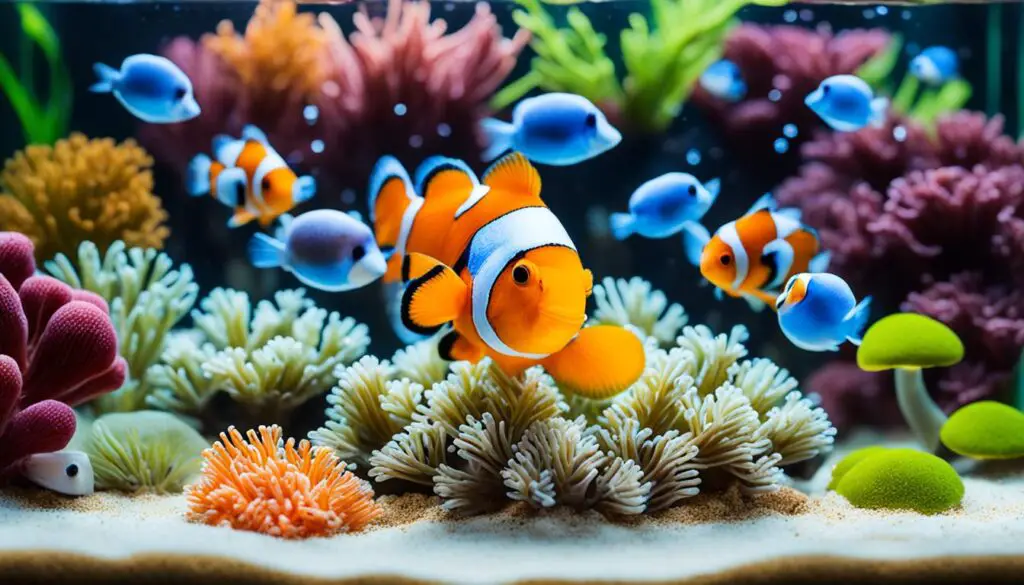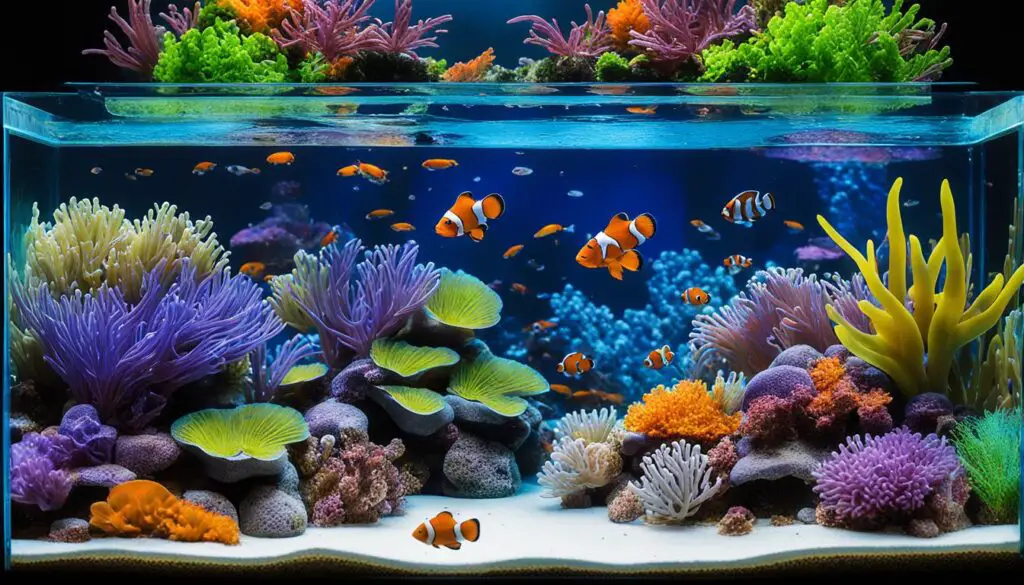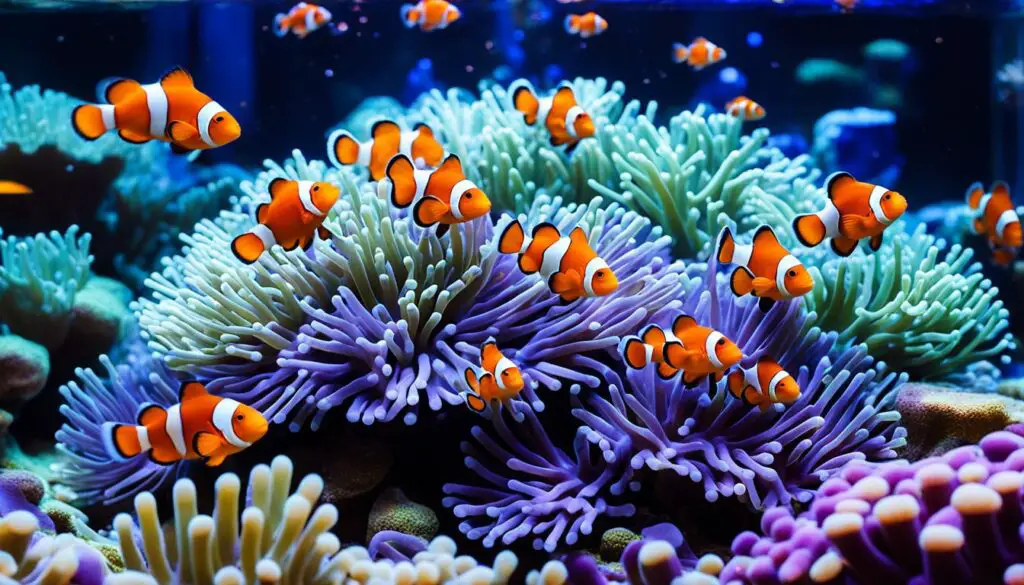Optimal Nutrition For Vibrant Cherry Shrimp Care

Introduction
Cherry Shrimp Dietary Requirements”: Cherry shrimp (Neocaridina davidi var. red), often referred to as Neocaridina shrimp, are a popular and colorful species frequently kept in freshwater aquariums. These tiny crustaceans, native to Taiwan, have become a staple in the world of aquarists due to their vibrant red coloration and ease of care. While maintaining these shrimp is relatively straightforward, one of the critical aspects of their care is understanding their dietary requirements.
Cherry shrimp are omnivores, which means they have a versatile diet that includes both plant matter and small animal organisms. In the wild, they forage for food in slow-moving, heavily vegetated waters, where they primarily consume algae, biofilm, and tiny organic particles. This natural diet is essential to their survival, and replicating it in a captive environment is crucial for their health and longevity.
Aquarists can provide a well-rounded diet for their cherry shrimp by offering various foods, such as algae wafers, blanched vegetables like spinach or zucchini, and specialized shrimp pellets. Additionally, infusoria, microorganisms, and other small creatures that develop naturally in a matured aquarium also serve as essential food sources for cherry shrimp.
Understanding the dietary preferences of cherry shrimp is essential for ensuring their well-being in a home aquarium. By offering a balanced diet that mimics their natural food sources, aquarists can enjoy the beauty and vibrancy of these shrimp while promoting their overall health.

What can you feed cherry shrimp?
Feeding Red Cherry Shrimp
Like many omnivores, they love variety. They will eat most any aquarium food but love shrimp pellets, algae wafers, blanched vegetables (zucchini, carrots, etc.), or one of the more exotic foods on the market. It is also a good idea to use some Zoo Med Plankton Banquet blocks in the tank.
Cherry shrimp, a popular choice among aquarium enthusiasts, have relatively simple dietary requirements. These small, vibrant creatures thrive on a varied diet that ensures their health and vibrant coloration. You can feed cherry shrimp a combination of commercial shrimp pellets, flakes, and specially formulated shrimp food. These foods typically contain essential nutrients and minerals, such as calcium, that are crucial for their well-being.
In addition to commercial foods, cherry shrimp benefit from natural sources of nutrition found in their tank environment. They are excellent algae eaters and can help control algae growth in your aquarium. Providing them with live or frozen foods like brine shrimp, daphnia, and microorganisms can also enhance their diet, ensuring they receive a balanced intake of proteins and other nutrients.
These leafy greens provide fiber and additional nutrients. Feeding should be moderate, and any uneaten food should be removed promptly to maintain water quality. By offering a diverse diet that includes both commercial and natural sources of nutrition, you can keep your cherry shrimp healthy, active, and displaying their vibrant red coloration to the fullest.
What is shrimps favorite food?
Shrimp like green food such as spinach and nettles, and vegetables such as kuri squash or zucchini are also suitable for feeding shrimp. Besides vegetable food, shrimp also need a certain amount of protein to keep them from assaulting younger or weaker conspecifics.
Shrimp, including popular aquarium species like cherry shrimp and various marine and freshwater varieties, have a wide range of favorite foods that depend on their specific type and natural habitat. Their diets are diverse, but a few common favorites can be identified.
One of the staple favorites for many shrimp species is algae. Shrimp are excellent algae grazers, and their love for consuming various types of algae, such as green algae and diatoms, plays a crucial role in maintaining the ecological balance in aquatic ecosystems. Additionally, they relish small particles and microorganisms that are present in the biofilm that forms on surfaces in their habitat.
Many shrimp species also enjoy detritus, which includes decomposing organic matter, small plant debris, and microorganisms. This detritus serves as a natural food source for them in the wild, helping to recycle nutrients within their environment.
In aquariums, shrimp can be fed a variety of foods, including specially formulated shrimp pellets, flakes, and granules, which are designed to meet their nutritional needs. They can also appreciate supplemental offerings of blanched vegetables like zucchini, spinach, and kale.
Overall, while algae and detritus are among their natural favorites in the wild, shrimp are adaptable and will consume a range of foods provided they are appropriately sized and suited to their dietary requirements.
How often do cherry shrimp need to eat?
It is easy to put too much food into the tank, which can then become polluted quite easily. Remember, shrimp are tiny, and don’t need too much per day. Many successful shrimp keepers even suggest that you feed only every other day, or at least put no food into the tank one day per week.
Cherry shrimp, a popular choice in the aquarium hobby, have relatively undemanding feeding habits. These small, colorful crustaceans are not heavy eaters, and their feeding frequency can be quite moderate. In general, feeding cherry shrimp once a day or every other day is typically sufficient to meet their dietary needs.
It’s essential to avoid overfeeding, as excess food can lead to water quality issues in the aquarium. Cherry shrimp are excellent at foraging for algae and microorganisms that naturally occur in their environment, so they can find additional sources of nutrition within the tank.
When offering food, it’s advisable to provide only a small amount that the shrimp can consume within a couple of hours. This prevents uneaten food from decomposing and affecting the water quality. Commercial shrimp pellets, flakes, or specially formulated shrimp food can be used as their primary diet, but it’s also beneficial to supplement their diet with blanched vegetables like zucchini, spinach, or kale. These can be added occasionally to provide variety and ensure they receive a balanced intake of nutrients.
Ultimately, the key to successfully feeding cherry shrimp is to maintain a balance, offering food in moderation while allowing them to graze naturally on the algae and microorganisms that naturally occur in their tank environment.
Will cherry shrimp eat shrimp pellets?
Hikari Shrimp Cuisine
These tiny sinking pellets are great for breeding crystal and cherry shrimp because they’re tiny enough to be eaten by both babies and adults.
Yes, cherry shrimp will readily consume shrimp pellets as part of their diet. Shrimp pellets are a popular and convenient food option for various shrimp species, including cherry shrimp. These specially formulated pellets are designed to meet the dietary needs of freshwater shrimp and provide them with essential nutrients.
Cherry shrimp are omnivores, and their diet in the wild typically consists of algae, detritus, small organisms, and microorganisms. Shrimp pellets are a suitable choice because they often contain a mix of plant-based and animal-based ingredients, making them a well-rounded food source. The pellets typically sink to the bottom of the aquarium, where cherry shrimp can easily access and graze on them.
Offering a small amount of pellets that can be consumed within a few hours is ideal. Cherry shrimp will indeed eat shrimp pellets, and these can be a valuable component of their diet when offered in the right quantities.
Do cherry shrimp need food?
Their diet includes commercial food like fish flakes, shrimp pellets, fish pellets, and algae wafers. Red Cherry Shrimp diet can also include edible plant matter shed from live aquarium plants.
Cherry shrimp, like all living organisms, require food to survive and thrive. They are not exceptions when it comes to their nutritional needs. In the wild, cherry shrimp are omnivorous and primarily feed on a variety of natural food sources, including algae, detritus, small organisms, and microorganisms. These natural foods provide essential nutrients, such as proteins, minerals, and fiber, necessary for their growth, reproduction, and overall well-being.
When kept in aquariums, cherry shrimp still need to be provided with suitable food to meet their dietary requirements. While they can graze on the algae and microorganisms present in the tank, it’s essential to supplement their diet with appropriate commercial foods to ensure they receive a balanced and complete nutrition. Specially formulated shrimp pellets, flakes, or granules designed for shrimp can be offered as their primary diet. Additionally, blanched vegetables like zucchini, spinach, or kale can be provided as occasional treats to add variety to their diet.
Cherry shrimp, like all living creatures, require food to sustain themselves, and it’s the responsibility of aquarium enthusiasts to provide them with the necessary nutrition to keep them healthy and thriving in a captive environment.
Can Cherry Shrimp eat fish food?
Cherry shrimp can consume fish food to some extent, but it’s not the most ideal or nutritionally balanced option for their diet. Fish food is primarily formulated to meet the dietary needs of fish, which often differ from those of shrimp.
While cherry shrimp are omnivorous and can adapt to a variety of food sources. Shrimp have a higher need for certain nutrients, such as calcium, which is vital for their exoskeleton development and molting. Many commercial fish foods may not provide the necessary calcium levels for shrimp.
Cherry shrimp need eat shrimp-specific food to stay healthy. These items suit shrimp’s specific dietary demands, including protein, minerals, and other nutrients.
That said, if fish food is occasionally offered as a supplementary option, it’s important to do so in moderation. Fish food can provide some nutrition for cherry shrimp, but it should not be their primary or exclusive diet. To maintain optimal health and vibrant coloration in cherry shrimp.
Do Cherry Shrimp eat live plants?
Peaceful and herbivorous cherry shrimp are popular aquarium pets. They graze algae and debris. They may nibble on living plants, although they rarely damage good aquatic vegetation.
Cherry shrimp manage and eat algae in planted aquariums because they like it. They feed on biofilm on plant leaves and tank surfaces, which prevents algae growth and benefits live plants.
In tanks with little algae or food, cherry shrimp may eat the softer sections of living plants.
Cherry shrimp focus on algae and detritus rather than harming live plants in well-balanced aquariums. Thus, when fed properly, they can be kept near aquatic plants without causing damage.
How can I ensure my Cherry Shrimp are getting enough food in a community tank?
Ensuring that your Cherry Shrimp receive enough food in a community tank is essential for their health and well-being. These small and colorful freshwater shrimp are generally peaceful and make delightful additions to community aquariums. To ensure they get sufficient nutrition, consider these strategies.
Provide a balanced diet. Cherry Shrimp are omnivores, eating both plants and tiny proteins. Give them high-quality shrimp pellets, algal wafers, blanched spinach or zucchini, and fish flakes sometimes.
Second, watch their eating. Watch how rapidly other tank residents eat. Faster-swimming fish or aggressive tankmates often outcompete Cherry Shrimp for food. Consider focused feeding if your shrimp aren’t receiving enough. To allow them to feed without competition, place a feeding dish or food near their favorite hiding areas.
Finally, keep water clean. Clean water improves Cherry Shrimp health and fosters algae growth, which can be eaten. Regular water changes and proper filtration are essential for their health.
In a communal tank, providing a variety of food, monitoring eating patterns, and keeping the tank clean can keep Cherry Shrimp healthy.

Conclusion
Understanding the dietary requirements of cherry shrimp is pivotal to their successful care in home aquariums. These charming, red-colored tiny crustaceans are valued not only for their aesthetic appeal but also for their role in maintaining a balanced aquatic ecosystem. Their diet, being omnivorous in nature, consists of a variety of foods, primarily algae, biofilm, and small organic matter. By providing a diversified menu that mimics their natural diet, aquarists can ensure the well-being and longevity of their cherry shrimp.
They need balanced nourishment for health, growth, and reproduction. Specially prepared shrimp pellets, blanched vegetables, and algae wafers satisfy their demands, fostering brilliant colors and energetic behavior. Microorganisms and infusoria in mature aquariums enhance their diet and nutrition.
Cherry shrimp, with its delicate motions and stunning look, are loved by aquarists worldwide. Their diets sustain them and help keep the aquatic environment healthy. Aquarists can enjoy cherry shrimp and take pride in maintaining a healthy aquarium habitat by feeding them.



